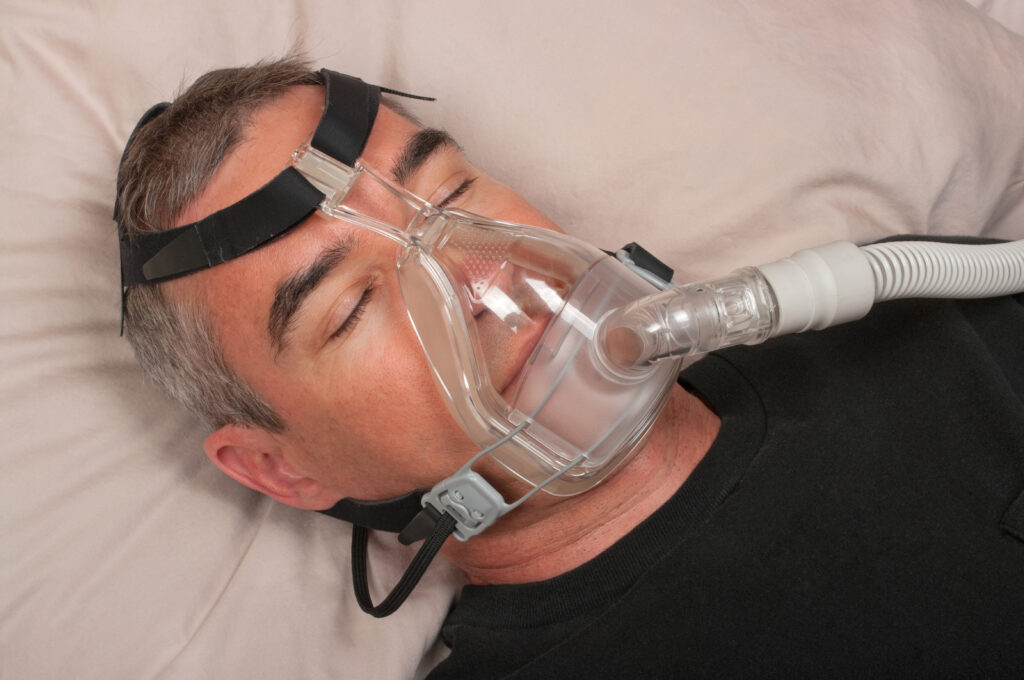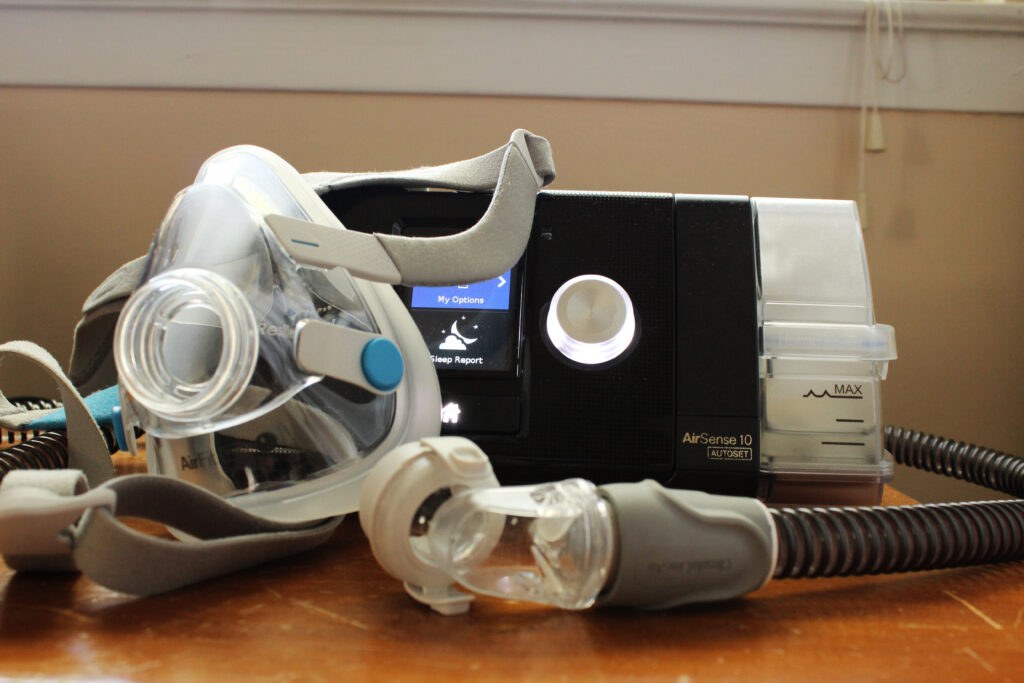Biden’s use of the machine came to light following the observation of indentations on his face that resembled CPAP straps. Biden had previously disclosed his diagnosis of sleep apnea, a condition that affects around 30 million Americans.
President Biden has been using a CPAP machine, a standard device used to address sleep apnea, as confirmed by the White House on Wednesday. This comes as no surprise since Biden had previously disclosed his history of sleep apnea in medical reports dating back to 2008, placing him among the approximate 30 million Americans affected by this condition.
Speculation arose after indentation marks were seen on the president’s face and neck this week, prompting the White House to address the issue. A White House official informed CBS News that Biden had indeed used a CPAP machine the previous night, noting that this is a common practice for individuals with a history of sleep apnea.
White House deputy press secretary Andrew Bates stated in a release that President Biden has consistently disclosed his sleep apnea history since 2008, emphasizing using a CPAP machine as part of his treatment.
A 2019 physical examination indicated that Biden does not use tobacco products or alcohol, and maintains a regular exercise routine of five days a week.
Following Biden’s most recent physical exam in 2023, the presidential physician affirmed his good health, describing him as a robust and energetic 80-year-old. The physician stated that the president remains fully capable of carrying out his duties.
Here’s everything you need to know about the sleeping disorder.
What is Sleep Apnea?
Sleep apnea is a sleep disorder characterized by pauses in breathing or shallow breathing during sleep. These breathing interruptions, called apneas, can last for a few seconds to several minutes and occur multiple times throughout the night.
Sleep apnea is typically accompanied by loud snoring, abrupt awakenings, and a feeling of excessive daytime sleepiness.
There are three main types of sleep apnea:
- Obstructive Sleep Apnea (OSA): This is the most common form of sleep apnea. It occurs when the muscles in the back of the throat fail to keep the airway open, leading to repeated breathing disruptions.
- Central Sleep Apnea (CSA): This type of sleep apnea is less common and involves a failure of the brain to transmit proper signals to the muscles that control breathing. As a result, the individual experiences pauses in breathing during sleep.
- Complex Sleep Apnea Syndrome (Mixed Sleep Apnea): This is a combination of both obstructive sleep apnea and central sleep apnea. It occurs when someone with a history of OSA develops CSA after using continuous positive airway pressure (CPAP) treatment.
What Causes Sleep Apnea?

Sleep apnea has various causes, and it’s often a combination of factors that contribute to its development. Some common causes and risk factors of sleep apnea include:
- Obesity: Excess weight, especially around the neck and throat area, can increase the likelihood of developing sleep apnea. The extra weight may put pressure on the airway, making it more prone to collapse during sleep.
- Structural abnormalities: Certain structural factors, such as a narrow airway, enlarged tonsils or adenoids, a deviated septum, or a large tongue, may obstruct the airway and contribute to sleep apnea.
- Age: Sleep apnea becomes more common as people age. This is partly due to the natural loss of muscle tone in the throat and airway as we grow older.
- Gender: Men are more likely to develop sleep apnea than women, although the risk for women increases after menopause.
- Family history: There is little evidence to suggest that sleep apnea can have a genetic component. Having a family history of sleep apnea can increase the likelihood of developing the condition.
- Smoking and alcohol consumption: Smoking and excessive alcohol consumption may increase the risk of sleep apnea. Smoking causes inflammation and fluid retention in the airway, while alcohol relaxes the throat muscles, making them more prone to collapse.
- Medical conditions: Certain medical conditions may contribute to the development of sleep apnea, including chronic nasal congestion, allergies, asthma, hypertension (high blood pressure), diabetes, and hormonal disorders such as hypothyroidism.
- Sleep position: Sleeping on your back may worsen sleep apnea symptoms as it increases the likelihood of the tongue and soft tissues blocking the airway.
It’s important to note that not everyone with these risk factors will develop sleep apnea, and some individuals without these risk factors can still develop the condition. Consulting with a healthcare professional is crucial for an accurate diagnosis and appropriate treatment plan.
Can You Prevent Sleep Apnea?
While sleep apnea may not always be preventable, there are several steps you can take to reduce your risk or minimize its impact. Here are some preventive measures:
- Maintain a healthy weight
- Sleep on your side
- Avoid alcohol and sedatives
- Quit smoking
- Maintain good sleep hygiene by establishing a consistent sleep routine and creating a sleep-friendly environment. Stick to regular bedtimes, ensure a comfortable sleep environment, and limit exposure to electronic devices before bed.
- Treat nasal congestion
- Manage underlying health conditions
Treatment

Treatment for sleep apnea aims to improve breathing during sleep and alleviate symptoms. The appropriate treatment option depends on the severity of the condition and individual factors.
Here are common approaches to treating sleep apnea:
- Continuous Positive Airway Pressure (CPAP): CPAP is the most common and effective treatment for sleep apnea. It involves wearing a mask over the nose or both the nose and mouth while sleeping. The CPAP machine delivers a constant flow of air pressure that keeps the airway open, preventing breathing interruptions. Proper mask fit and regular use are essential for optimal results.
- Oral Appliances: Certain oral devices, such as mandibular advancement devices, can be used to reposition the jaw and tongue, keeping the airway open during sleep. These devices are custom-made and fitted by dentists with expertise in sleep medicine.
- Lifestyle Changes: Certain lifestyle modifications can help improve sleep apnea symptoms, especially in mild cases. These may include weight loss, regular exercise, avoiding alcohol and sedatives, and sleeping in a side position instead of on the back.
- Surgery: Surgical options may be considered for severe or treatment-resistant sleep apnea cases. Procedures such as uvulopalatopharyngoplasty (UPPP), tonsillectomy, adenoidectomy, or maxillomandibular advancement (MMA) surgery aim to remove or reposition obstructive tissues in the throat or improve the structure of the upper airway.
- Positional Therapy: For individuals whose sleep apnea primarily occurs when sleeping on their back (supine position), positional therapy can be helpful. Techniques such as wearing special devices or using positional alarms can encourage sleeping on the side.
- Adaptive Servo-Ventilation (ASV): ASV is a specialized form of positive airway pressure therapy that adjusts pressure based on an individual’s breathing patterns. It’s typically used for complex or central sleep apnea cases.
It’s important to consult with a healthcare professional or sleep specialist to determine the most appropriate treatment option for your specific situation. They can conduct sleep studies, evaluate your symptoms and medical history, and provide personalized recommendations for the effective management of sleep apnea. Regular follow-ups and adherence to the prescribed treatment plan are crucial for long-term success in treating sleep apnea.


